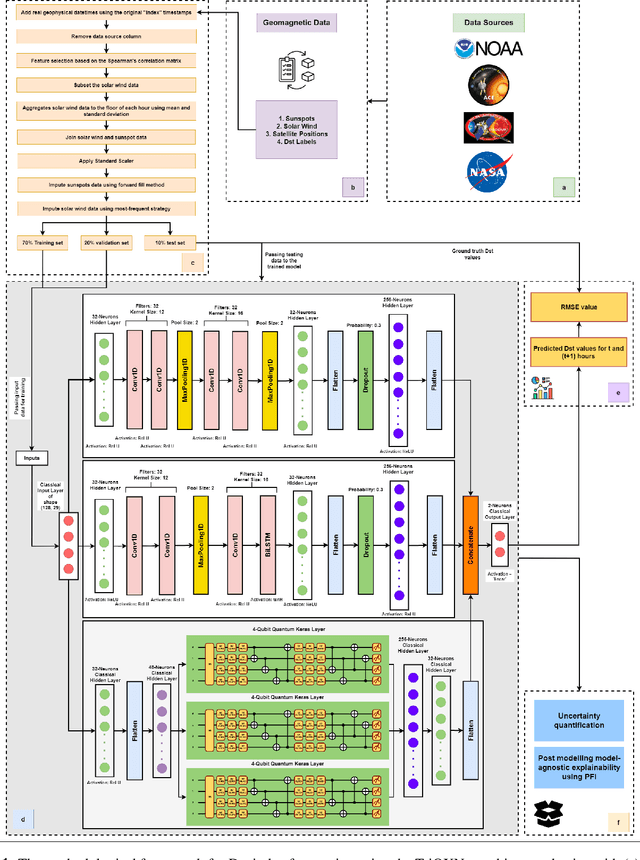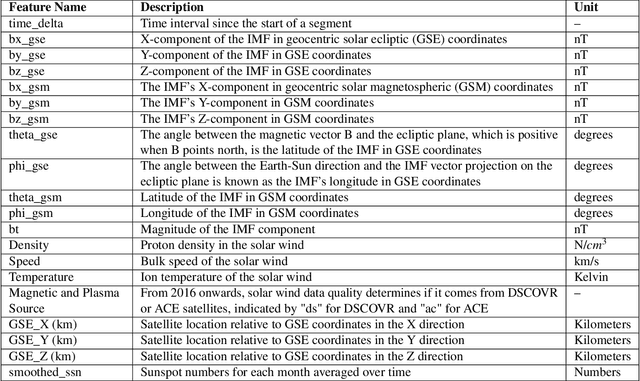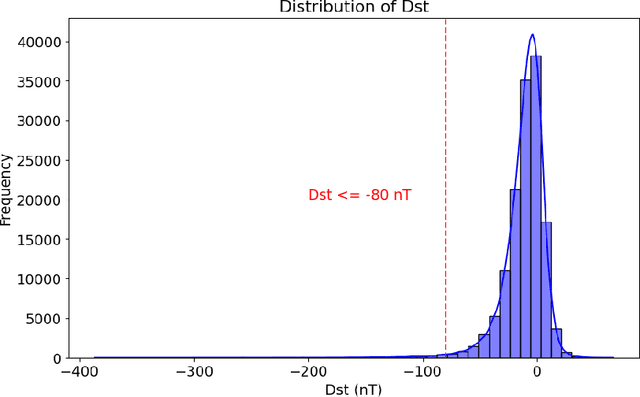R. Simon Sherratt
TriQXNet: Forecasting Dst Index from Solar Wind Data Using an Interpretable Parallel Classical-Quantum Framework with Uncertainty Quantification
Jul 10, 2024



Abstract:Geomagnetic storms, caused by solar wind energy transfer to Earth's magnetic field, can disrupt critical infrastructure like GPS, satellite communications, and power grids. The disturbance storm-time (Dst) index measures storm intensity. Despite advancements in empirical, physics-based, and machine-learning models using real-time solar wind data, accurately forecasting extreme geomagnetic events remains challenging due to noise and sensor failures. This research introduces TriQXNet, a novel hybrid classical-quantum neural network for Dst forecasting. Our model integrates classical and quantum computing, conformal prediction, and explainable AI (XAI) within a hybrid architecture. To ensure high-quality input data, we developed a comprehensive preprocessing pipeline that included feature selection, normalization, aggregation, and imputation. TriQXNet processes preprocessed solar wind data from NASA's ACE and NOAA's DSCOVR satellites, predicting the Dst index for the current hour and the next, providing vital advance notice to mitigate geomagnetic storm impacts. TriQXNet outperforms 13 state-of-the-art hybrid deep-learning models, achieving a root mean squared error of 9.27 nanoteslas (nT). Rigorous evaluation through 10-fold cross-validated paired t-tests confirmed its superior performance with 95% confidence. Conformal prediction techniques provide quantifiable uncertainty, which is essential for operational decisions, while XAI methods like ShapTime enhance interpretability. Comparative analysis shows TriQXNet's superior forecasting accuracy, setting a new level of expectations for geomagnetic storm prediction and highlighting the potential of classical-quantum hybrid models in space weather forecasting.
A novel approach for modelling and classifying sit-to-stand kinematics using inertial sensors
Jul 14, 2021



Abstract:Sit-to-stand transitions are an important part of activities of daily living and play a key role in functional mobility in humans. The sit-to-stand movement is often affected in older adults due to frailty and in patients with motor impairments such as Parkinson's disease leading to falls. Studying kinematics of sit-to-stand transitions can provide insight in assessment, monitoring and developing rehabilitation strategies for the affected populations. We propose a three-segment body model for estimating sit-to-stand kinematics using only two wearable inertial sensors, placed on the shank and back. Reducing the number of sensors to two instead of one per body segment facilitates monitoring and classifying movements over extended periods, making it more comfortable to wear while reducing the power requirements of sensors. We applied this model on 10 younger healthy adults (YH), 12 older healthy adults (OH) and 12 people with Parkinson's disease (PwP). We have achieved this by incorporating unique sit-to-stand classification technique using unsupervised learning in the model based reconstruction of angular kinematics using extended Kalman filter. Our proposed model showed that it was possible to successfully estimate thigh kinematics despite not measuring the thigh motion with inertial sensor. We classified sit-to-stand transitions, sitting and standing states with the accuracies of 98.67%, 94.20% and 91.41% for YH, OH and PwP respectively. We have proposed a novel integrated approach of modelling and classification for estimating the body kinematics during sit-to-stand motion and successfully applied it on YH, OH and PwP groups.
 Add to Chrome
Add to Chrome Add to Firefox
Add to Firefox Add to Edge
Add to Edge